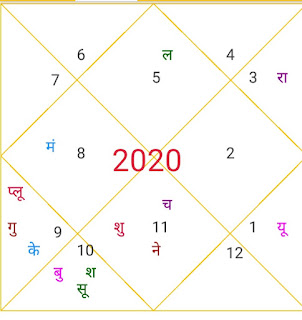धर्मनिरपेक्षता की चुनौतियों के मध्य भारत में हुई एक नये धर्म की स्थापना...
Modi
Is an Emotion Beyond Politics: Ayodhya's
Resurgence and the Renaissance of Ram Rajya in Vedic Hindu Dharma
As
the nation celebrates the consecration of Lord Ram at the Ram Temple in
Ayodhya, this moment transcends mere spiritual significance. The historical
event signifies the dawn of Ram Rajya, heralding the restoration of Sanatan
Vedic Hindu Dharma – the oldest living civilization. This ancient tradition,
known for its remarkable tolerance, imparts timeless wisdom, guiding
individuals to cultivate spirituality, kindness, respect, love, and embark on a
fulfilling journey along the VRight Path (righteous path)
In
the tapestry of Indian politics, Narendra Modi has transcended being just a
leader; he has become an emotion. The recent speech delivered by the Prime
Minister at Ayodhya, particularly during the consecration of the Sri Ram
temple, has garnered attention not just for its political implications but also
for the cultural nuances embedded within. The comparison drawn between Nehru's
approach of minority appeasement and Modi's emphasis on the historical identity
of India highlights a shift in narrative, placing focus on unity, cultural
consciousness, and the overarching values of the nation.
One
striking aspect of Modi's speeches is the incorporation of cultural nuances
that often go unnoticed. The invocation of the idea of dharma, emphasizing a
way of life over religiosity and rituals, reflects a broader vision of Indian
spirituality. The reinterpretation of Lord Ram in his speeches is notable for
its avoidance of religious divisiveness, aiming instead to raise cultural
consciousness. Reading between the lines of his addresses reveals a commitment
to unity and prosperity, urging citizens to look toward the future and build a
nation where peace and prosperity prevail.
The
Ayodhya speech, in particular, stands out as it emanated more from Modi's heart
than his brain. His expression of happiness at realizing a dream that the
Indian civilization has held for five hundred years reflects a deeper
connection to India's historical and cultural roots. Importantly, there is no
hint of pride or vengeance, but rather an appeal for the people to forge a path
toward a future where India can regain its past glory.
Modi's
call to unite and focus on national growth resonates with the sentiments
expressed by other prominent figures like Mohan Bhagwat, who emphasized the
need for unity and progress beyond divisive issues. The construction of the Ram
Mandir is seen as a symbol of development, coexisting with the building of a
new mosque at a different location – a bold move that reflects the government's
commitment to inclusivity and religious harmony.
International
perspectives also highlight the admiration for Modi's leadership. An Irishman
from Dublin expressed that India is fortunate to have a leader like Modi,
showcasing the global recognition of his statesmanship and vision for the
nation.
The
speech at Ayodhya signals a shift in the narrative, urging communities to come
together, resolve differences, reconcile with the past, and set an example for
the world. Modi envisions India as a beacon of peace, prosperity, and unity,
echoing the sentiments shared by others like Mohan Bhagwat. The consecration of
the Sri Ram temple is seen as a milestone in moving beyond religious
insecurities, fostering a harmonious India based on timeless ideals.
It
is essential to approach Modi's speeches with a nuanced understanding,
recognizing the evolution and flowering of their meaning over time. The
speeches by leaders like Yogi Adityanath, Mohan Bhagwat, and PM Modi are
complementary, forming an open-source architecture that will continue to evolve
in the future. Modi's inclusive approach hands over the civilizational battle
to the people of India, emphasizing the shared responsibility of all citizens
in shaping the nation's destiny.
The
shift in attitude and views within the Sangh chief, as evident in recent
speeches, indicates a focus on national and geopolitical issues over religious
fervor. The emphasis on ending the euphoria around reclaiming temples in every
mosque suggests a broader perspective centered on bread and butter issues,
national growth, and geopolitics.
Reading
into Modi's statements, it becomes clear that his focus on the Ram temple is
intricately linked to the idea of a developed India. The concept of Ram Rajya,
as expounded by Modi, aligns with the principles of rule of law, justice,
equality, and anti-corruption – values enshrined in the Indian Constitution.
The assertion that India is a Hindu Rashtra under the same Constitution
challenges Nehru's version of secularism, which Modi argues involved pandering
to partitioners and marginalizing Hindus.
Modi's
call for an awakened Hindu populace signifies a revival of India's
civilizational ethos. The representation of diverse communities from different
regions during the consecration of the Sri Ram temple underscores the unity and
collective strength of the nation. The speech is a testament to the fulfilment
of a long-cherished dream for many, transcending regional boundaries and
reflecting a shared Hindu identity.
In
conclusion, Modi's speeches, especially the one at Ayodhya, go beyond mere
political rhetoric. They delve into the cultural nuances, emphasizing unity,
prosperity, and a shared vision for India's future. The symbolism of the Sri
Ram temple becomes a catalyst for national development and inclusivity, making
Modi not just a political leader but an embodiment of the aspirations and cultural
consciousness of the nation.





Comments
Post a Comment